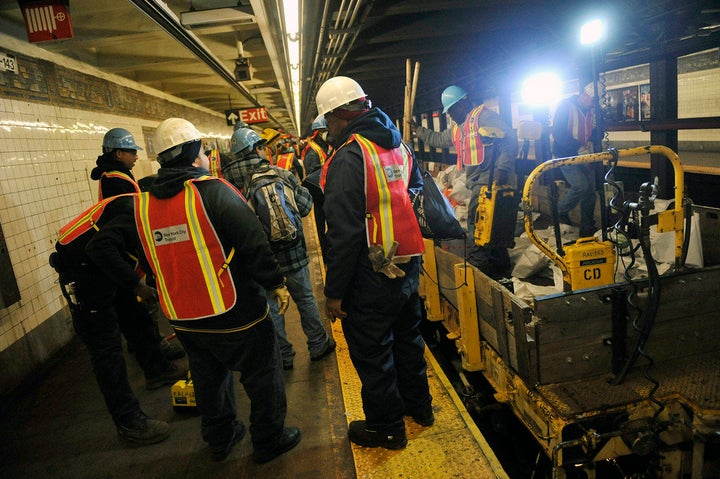
There's nothing like a natural disaster the likes of a Hurricane Sandy to concentrate the mind. The resulting death, destruction, and disruptions are likely to be felt by New Yorker's for some time to come, and for some, forever.
Sandy was a shock to the nation's largest school system as well. The problems aren't confined to the dozens of flooded school buildings and the thousands of displaced students. No one blames our elected leaders for the destruction to large swaths of the New York and Jersey coasts.
But it appears that changes in enrollment policy over the past decade have made students ever more reliant on the public transportation system, a system that according to the Governor Cuomo, is ancient by today's standards and more vulnerable to disruptions than ever.
Under Mayor Bloomberg, the policy of "school choice" has been touted as a central component of his school reforms. High school and middle school students now have the freedom to apply to any school in a system that encompasses the five boroughs, in an area of 469 square miles.
In practice it has resulted in a massive increase in the numbers of students riding mass transit to get to school. The traditional neighborhood high school, where most kids could walk to school, have been de-coupled from their neighborhoods, and their numbers reduced drastically.
It follows then, that disruptions to mass transit results in significant disruptions of the education process. That is what has happened to students outside the flood zone.
In 2009 a fire destroyed the buses that transported over 500 students a day to Bronx Science High School from Queens. It left parents to scramble for another bus company. It was a harbinger of things to come. They paid over $2,000 a year per child for the private service.
I asked friends who attended Bronx Science in the '60s and '70s about the size of the Queens population at Science back then and they told me only a handful of students commuted from Queens. In a bygone era almost all of the students being transported today would have attended the first rate neighborhood high schools that existed in Queens.
But today, if you are living in Manhattan and get accepted to a school in the far reaches of Brooklyn, you're free to go. As far as the school authorities are concerned time and distance is no barrier. I've had students with commutes of close to two hours a day each way traveling from other boroughs.
These kids were not the high achievers whose parents could afford a private bus service to Bronx Science either. My students were naturally prone to excessive absences and tardiness because of their lengthy trip.
Transportation costs have skyrocketed too. A push to have students pay for their metro cards was brought after the city failed to reimburse the MTA for student fares. In 2005-2006 that tab ran to $161.5 million that the city owed the MTA. Those costs have continued to rise.
The fact that hundreds of thousands of students are now riding long distances on an overtaxed aged mass transit system isn't even a consideration for a mayor who claims to be at the forefront of the Green Movement.
Don't forget that Mayor Bloomberg endorsed President Obama after Sandy had done her damage and he specifically mentioned global warming as one of his main reasons for the endorsement. When you add in the mayor's campaign against childhood obesity and the Big Gulp, you might ask yourself why he isn't in favor of kids walking to school instead of increasing the carbon footprint?
Which do you prefer, kids walking to school or snacking on long subway rides?
When a storm like Sandy occurs it has a cascading effect on the public transportation system so that people outside of the zone of destruction lose mobility too. I think it's fair to ask if a neighborhood school system is preferable in a city as vast as New York, either in time of crisis or when it comes to educating our kids.
These are questions of public policy that have gone unremarked. That doesn't mean they should be ignored. It took Mother Nature to open up the discussion.